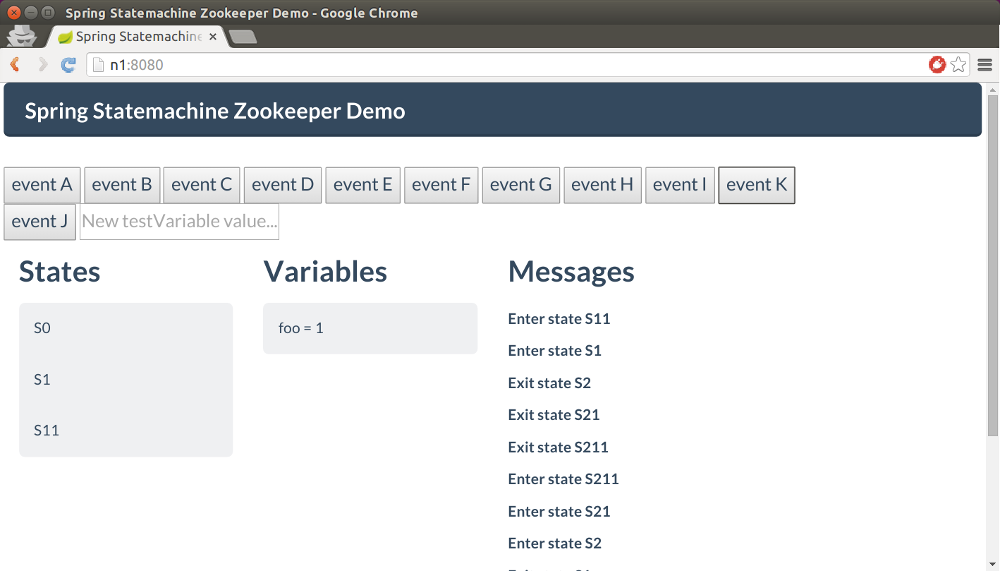Web is a distributed state machine example using a zookeeper to handle distributed state. This example is meant to be run on a multiple browser sessions against a multiple different hosts.
This sample is using a modified state machine structure from a Chapter 31, Showcase to work with a distributed state machine. The state machine logic is shown above:
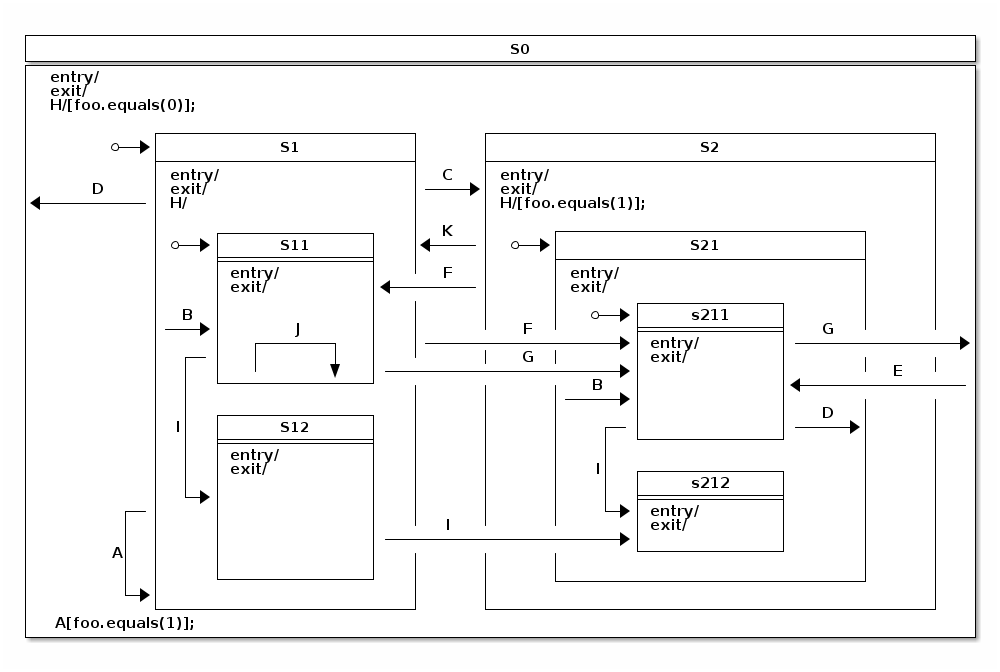
![[Note]](images/note.png) | Note |
|---|---|
|
Due to nature of this sample an instance of a |
Let’s go through a simple example where three different sample instances are
started. If you are running different instances on a same host you need to
distinguish used port by adding --server.port=<myport> to the command.
Otherwise default port for each host will be 8080.
In this sample run we have three hosts, n1, n2 and n3 which all
have a local zookeeper instance running and a state machine sample running
on a port 8080.
@n1:~# java -jar spring-statemachine-samples-web-1.1.1.RELEASE.jar @n2:~# java -jar spring-statemachine-samples-web-1.1.1.RELEASE.jar @n3:~# java -jar spring-statemachine-samples-web-1.1.1.RELEASE.jar
When all instances are running you should see all showing similar
information via a browser where states are S0, S1 and S11,
and extended state variable foo=0. Main state is S11.
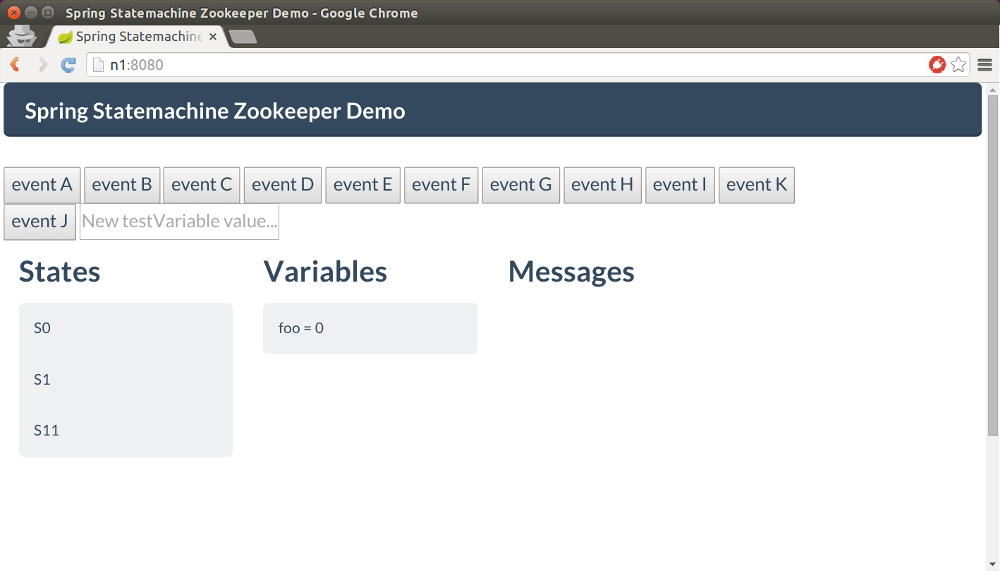
When you press button Event C in any of a browser window,
distributed state is changed to S211 which is the target state
denoted by transition associated with an event C.
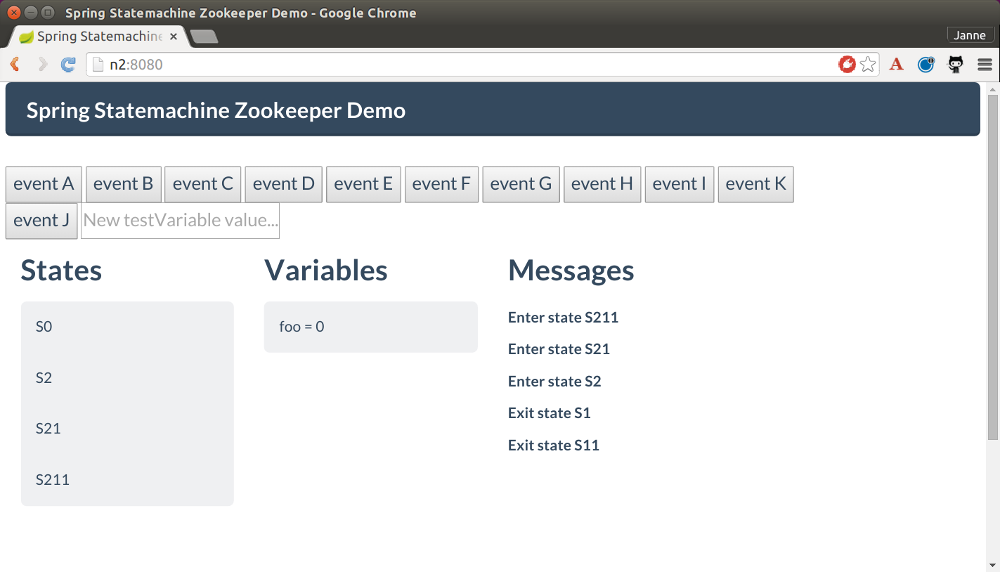
Then let’s press button Event H and what is supposed to happen is
that internal transition is executed on all state machines changing
extended state variable foo from value 0 to 1. This change is
first done on a state machine receiving the event and then propagated
to other state machines. You should only see variable foo to change
from 0 to 1.
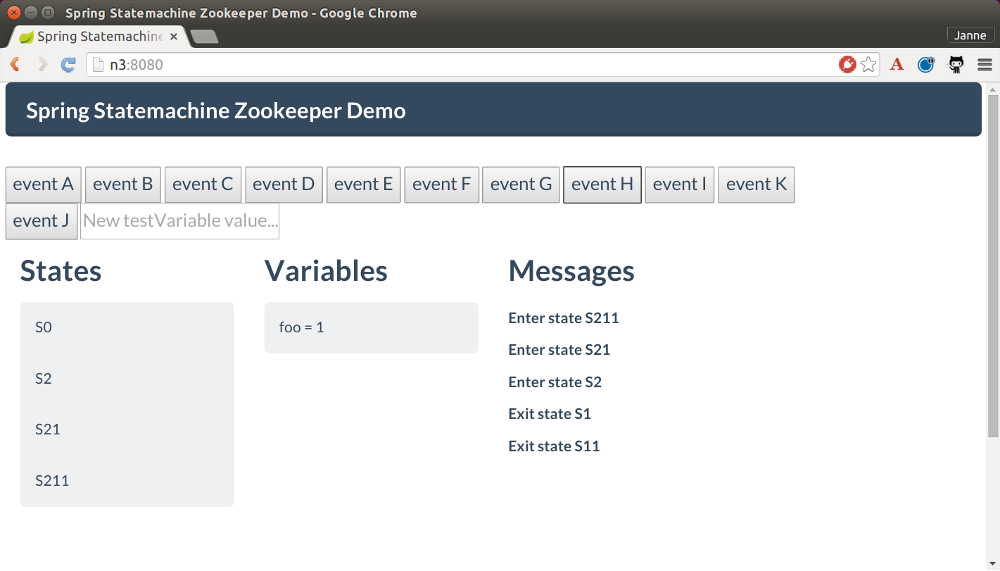
Last we simply send an event Event K which is supposed to take state
machine state back to state S11 and you should see this happening in
all browser sessions.
